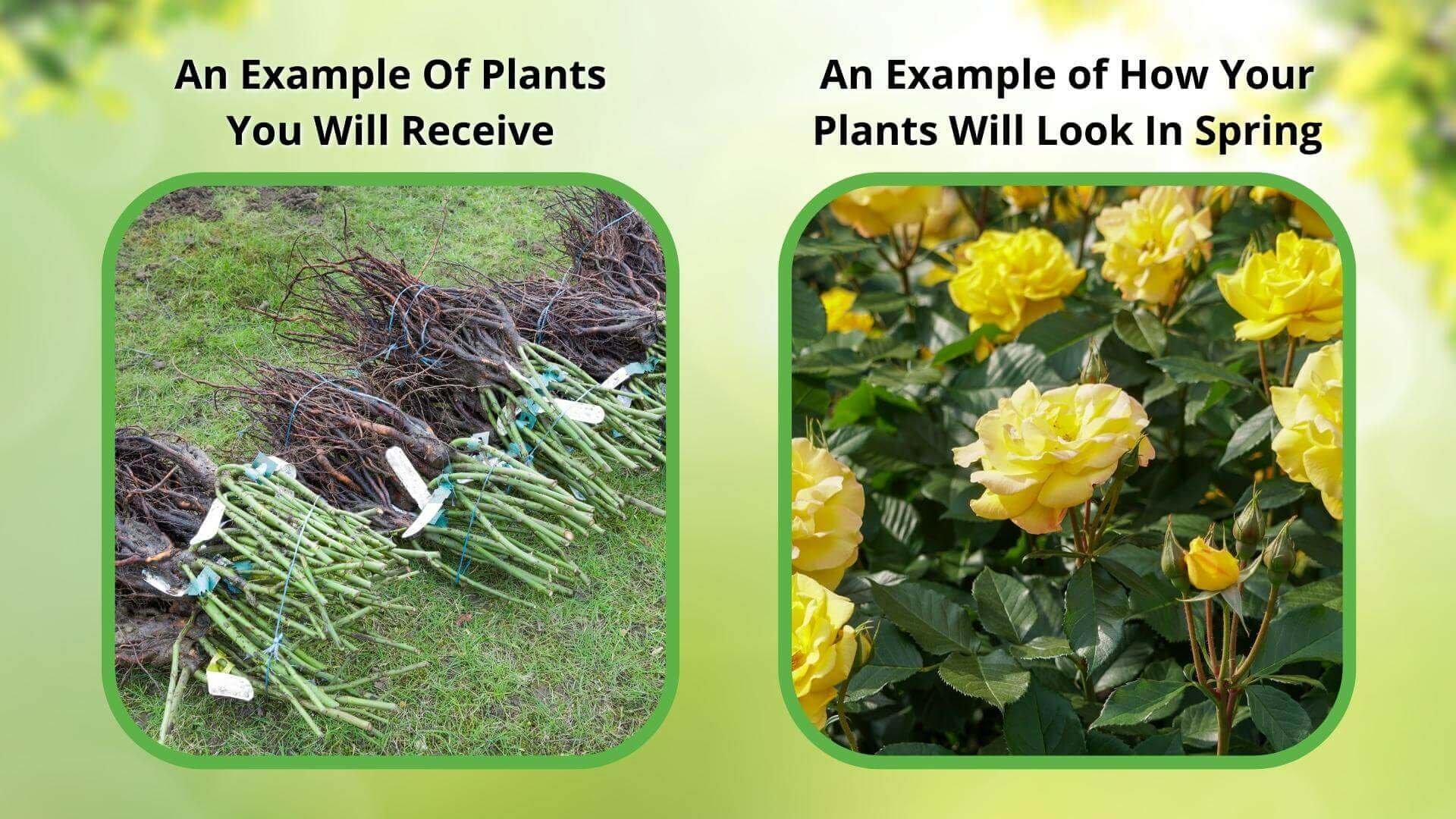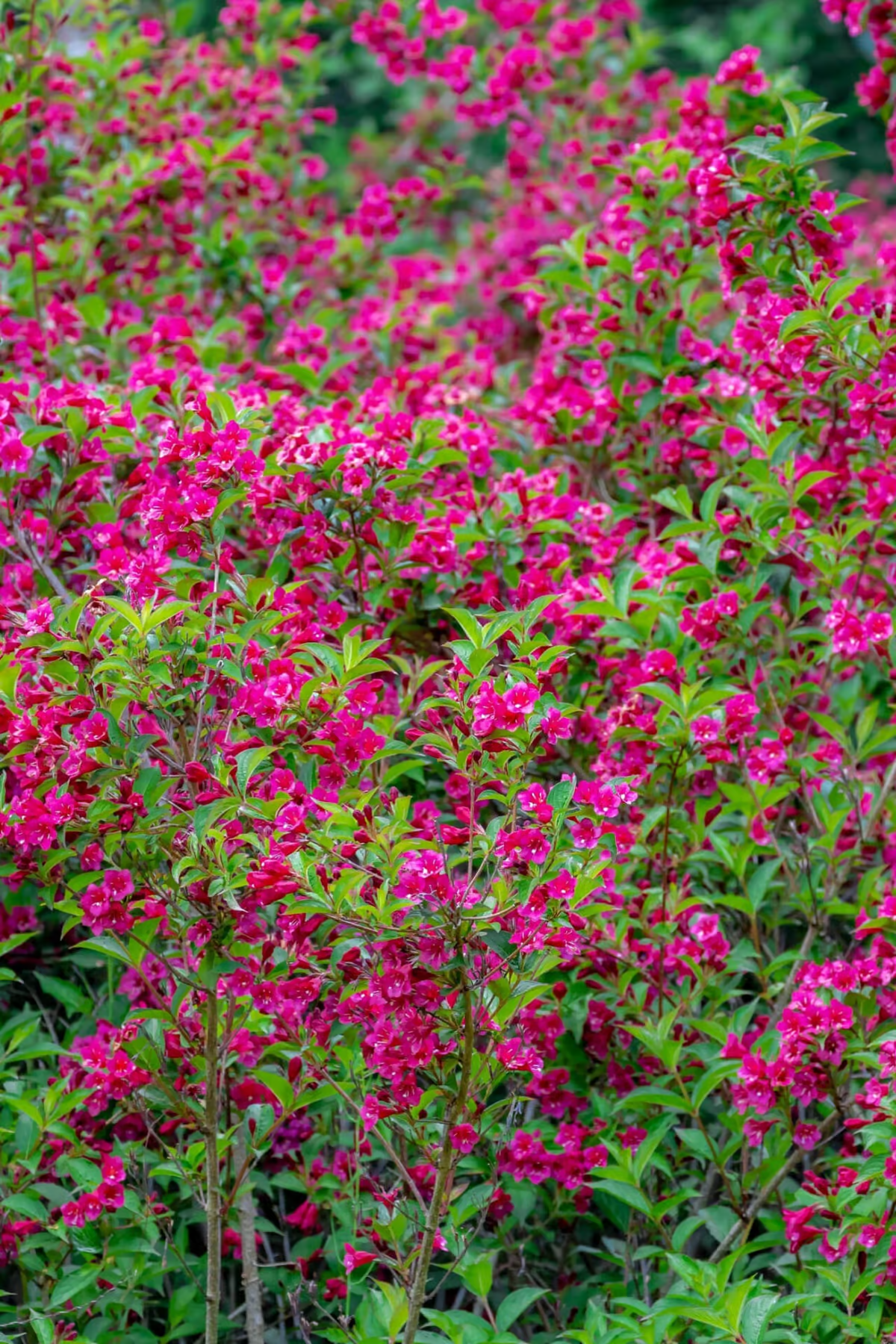What We Ship
The Benefits of Bare Root Plants
Bare root plants are shipped without soil or pots, making them lightweight and easy to handle. They arrive dormant, ready to be planted and thrive as beautiful, healthy additions to your garden.
Your Growing Zone Is:
Shop Plants For My Zone



🌸When you add 1 plant to cart, it automatically adds the free one
Couldn't load pickup availability
Spend $19.99 or more and get FREE SHIPPING
Red Weigela is a deciduous ornamental plant known for its profusion of tubular, dark scarlet to pinkish scarlet flowers that attract pollinators and add a splash of color to garden landscapes. It is a versatile and attractive shrub commonly used in landscaping to enhance the aesthetic appeal of outdoor spaces. With its stunning trumpet-shaped flowers and unique foliage, this plant brings several benefits to landscaping projects.
It is one of several attractive cultivars developed after the flowers were imported to England from Japan in 1845. Scarlet is only one of the colors present in this array of cultivars, and others include pink, purple, or even orange. But the crimson version is among the prettiest, especially when combined with the finely tapered and slightly serrated leaves.
Although not broad or showy, the flowers still make a lasting impact because of the purity of their color and the fineness of their shape. The delicateness of their 2-inch length belies their incredible hardiness. They often bloom from the last frost until the first frost, dominating the space below the 12-inch line in the garden. These fantastic flowers don't just look good, either. These trumpet-shaped blooms smell like sweet citrus, filling the air with a delightful aroma that attracts human visitors to the garden and pollinators.
The leaves are about 4 or 5 inches long, slender, and finely tapered. They form an eye-pleasing green bed that accentuates the marvelous blooms throughout the spring and summer into fall. The petioles are short, which allows the leaves to overlap one another for a splendid layered effect. In bright sunshine, especially on dewy mornings, the light will reflect off the flowers, lending their hue to the leaves and creating a pleasing multicolored effect.
Because the plant and its flowers grow only to about a foot in height, taller plants of the same or similar colors can be planted behind them, creating the tiered look. These flowers look smashing, surrounding a focal point in a garden, such as an imposing tree. Combining them with an epiphytic plant of the same color that climbs the trunk creates a quirky and beautiful botanical palette.
This flowering shrub attracts different species of pollinators, which is crucial for the garden's success and the environment. The leaves are also a necessary part of the life cycle of certain butterflies, which adds to the plant's beneficial environmental impact.
Bloom Cycle Duration
It blooms generally late spring to early summer and can last 4-6 weeks. It's a recurring bloomer, or, given the right conditions, it can bloom in a brief spike at the end of summer or early fall.
This shrub works well in all sunny climates, with at least 6 hours of sunlight daily. It is medium-hardy and can be used in its native state as a hedge plant, border plant, or spurge flower.
Best fertilizer
It does well with a slow-release fertilizer. To encourage its leaves and stamens, use it in February-March, right before spring rises.
Red Weigela can also be propagated from a softwood cutting in late spring or early summer. All it takes is to drop the cuttings in a rooting hormone, place them in a moist growing medium, and place them in a warm, moist atmosphere until they roost.

Bloom Season
Spring
Bloom/Foliage Color
Red
Height at Maturity
Under 10 Feet
Care
Red Weigela thrives in well-drained soil and benefits from regular watering, especially during dry spells. Trim after blooming to maintain shape and promote new growth. Mulch around the base helps retain moisture and suppress weeds. Fertilize annually for best results.
Plant Reproduction
Red Weigela spreads through suckers and root shoots, forming clumps.
Plant bare-root shrubs during the more excellent spring or fall months, from November through April. Dig a hole twice as wide as the root system and slightly more profound than its height. Position the shrub so that the top of the roots is level with the ground, and put back the soil dug over the roots. Apply a 2-3 inch layer of mulch around the base to retain moisture and suppress weeds, ensuring the mulch does not touch the shrub's stem. Water regularly, especially during the first year, to establish strong roots. Prune shrubs as needed to promote healthy growth. In the spring, fertilize with a balanced, slow-release fertilizer suited to the specific needs of the shrub.
Shipping date depends on the date displayed and chosen when you order from the product's page.
We only accept returns on plants verified dead. If you think your plants have died, we offer a 1 year warranty, please use use this File a Claim Link to verify dead plants and start with return warranty process.



What We Ship
The Benefits of Bare Root Plants
Bare root plants are shipped without soil or pots, making them lightweight and easy to handle. They arrive dormant, ready to be planted and thrive as beautiful, healthy additions to your garden.
Cost-Effective
With no heavy pots or soil, you'll save 50-60% on shipping costs, and you can easily plant our plants yourself—no equipment needed, just a spade for digging small holes.
Hassle-Free
Bare root plants are hassle-free because they're lightweight, easy to handle, and require minimal packaging. They establish quickly, saving you time and effort in planting and maintenance.
Better Growth
Bareroot dormant plants are more hardy because they adapt better to new environments, with stronger root systems that establish quickly, leading to greater resilience and improved survival rates in various conditions.
Eco-Friendly
Bare root native plants are environmentally friendly because they promote biodiversity, require less water and maintenance, and support local ecosystems, making them a sustainable choice for eco-conscious gardening

Vibrant Blooms:
Adds vivid red to pinkish scarlet flowers to your garden from late spring to first frost.
Pollinator-Friendly:
Its trumpet-shaped blooms with a sweet citrus scent attract bees and butterflies.
Hardy Flowers:
Delicate 2-inch flowers are durable and make a lasting visual impact
Charming Foliage:
Slender green leaves highlight the flowers and create a pleasing multicolored effect.
Caring Tips
Each box contains detailed care instructions and information about your product. But here's the basics.
Care Tips
Red Weigela thrives in well-drained soil and benefits from regular watering, especially during dry spells. Trim after blooming to maintain shape and promote new growth. Mulch around the base helps retain moisture and suppress weeds. Fertilize annually for best results.
Light Requirements
Red Weigela grows well in complete sun to part shade. It needs 4 hours of direct daylight daily for solid growth and colorful flowering. Some afternoon shade can be beneficial in areas with intense heat.
Hardy Planting Zones
4 • 5 • 6 • 7 • 8
Pleased with plants. Packaged nice.
Plants arrived moistened, well-packaged, and very healthy. They were planted immediately. The service was exceptional.
Expertly packaged, arrived in a timely manner and healthy bare root Weigelia. Just planted them and waiting to see it take! I do have pictures of the packaging of plants and then planted but can't add pictures!!
Came domat Good root system. Got them planted just in time for a good soaking rain. Can’t wait till spring to see them bloom out
We did receive the Bush. We won’t know till spring to know what we think about it. Thank you for sending it
Your Climate Zone:
Shop the below categories perfect for your climate zone and ideal for planting now.
